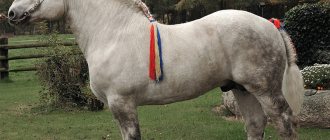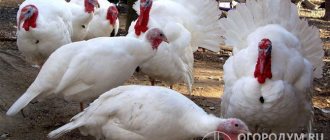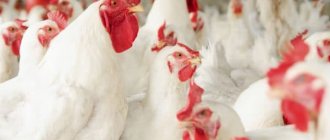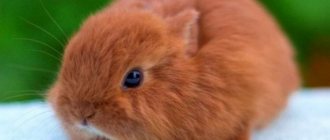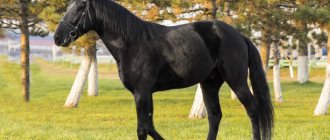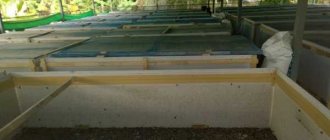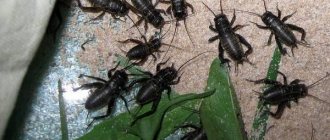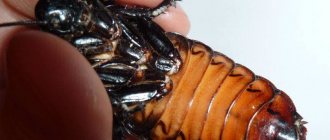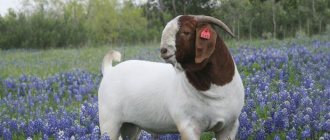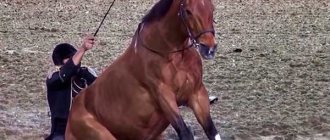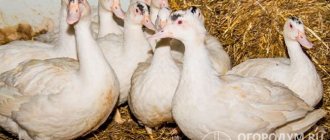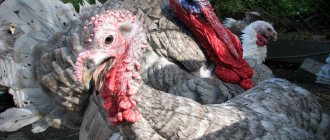It is interesting that these curious birds were once not found on our continent. They were brought by the Spaniards from America in the 14th century. Europeans immediately tasted the tender dietary meat and since then turkey has become a traditional dish.
The muscles of these birds consist of highly digestible proteins. Just like chicken, it is recommended for weakened or sick people. It is well tolerated by those who suffer from arthritis or urolithiasis. Compared to chicken, it contains more calcium, which is beneficial for a growing body and therefore especially suitable for children.
From the very first days of breeding, the selection of the most interesting individuals from an economic point of view was carried out, and in the 19th century, selection became targeted. There is currently a wide variety of turkey breeds. Turkey breeds for home breeding and industrial breeding differ from each other primarily in weight and secondarily in color. Additionally, there are a couple more important parameters - the ratio of poultry weight to meat yield and the time it takes to gain optimal weight for slaughter.
The most common turkey meat breeds
Broad Breasted White
This breed was developed by American breeders in the 20th century.
The bird has a heavy oval body with a convex chest. On the gray heads you can see a very long bright red growth. Broad Breasted White
Turkeys can gain up to 22 kg of weight. A special feature of the breed is its excellent productivity and the ability to keep and grow in cages. Broad-breasted White turkeys gain optimal weight faster in cages, using the same amount of feed as if they were kept on pasture.
Moscow Bronze
Another breed resulting from crossing local birds with broad-breasted bronze turkeys. Unlike the previous variety, the body of these turkeys is more elongated, the chest is massive and convex.
Moscow Bronze
Birds of this breed are hardy and can graze on pastures, which makes it possible to keep them on private farms without any problems.
Males of the Moscow Bronze reach up to 20 kg of weight, females - up to 10 kg.
Cross BIG-6
A hybrid bred by foreign breeders. This variety amazes with its productivity and early maturity. BIG-6 is white with a dark spot on the chest. The chest is round, the neck is long and powerful.
Cross BIG-6
These turkeys grow in an interesting way, with their weight increasing exponentially. If at the age of three months a turkey chick weighs about 3-4 kg, then after a month he gains all 10 kg. Ultimately, the weight of an adult male can exceed 24 kg. At the same time, BIG 6 consumes relatively little feed - two and a half kilograms of feed per kilo of live weight.
Hybrid Converter
The bird comes from Canada, the meat of which has a particularly pleasant taste. The basis for the crossing was the White Dutch breed and the already mentioned Broad-Breasted Bronze. The breed is considered one of the most widespread throughout the world.
Hybrid Converter
One of the advantages of this bird is its precocity - the Hybrid Converter (or Indoostrich) quickly gains live weight. The weight of males during five months of keeping can reach 20 kilograms or more, the weight of females is usually half that. Earlier we mentioned the ratio of the weight of the bird to the resulting meat; this breed has one of the best ratios - 85%.
Females of the Hybrid Converter breed are capable of producing about 50 eggs per year
Turkeys begin laying eggs at nine months of age and produce about 50 eggs per year. Females willingly take care of their offspring and carefully incubate their eggs. In our country, this breed is in increasing demand due to its unpretentiousness and rapid adaptation to the climate.
BYuT-8
A relatively recently created breed of turkey by English breeders. Externally, this bird looks decorative. The white lush plumage is combined with an arched neck, a bright red growth. The paws are very massive, as is the body.
BYuT-8
On average, an adult turkey of this breed can weigh about 27 kg, and a turkey - 10 kg. But such a mass can only be achieved with proper fattening. Before 4 months, turkeys are given 2.5 kg of feed, after which - almost 3 kg. After 20 weeks, birds need just under 3.5 kg of feed.
Blue
The blue turkey breed has another name - “slate”. This is a rare breed for our country. It can only be found in nurseries and isolated private farmsteads. The breed is considered decorative for most poultry farms, because even adult males barely reach 5 kg in weight.
An attractive side of the Blue breed is the unusual coloring of the birds, which can range from a soft blue tint (standard) to dark gray (culling). Interspersed with other colors indicate a non-purebred origin. Many blue breed breeders note increased sensitivity and sickness in birds.
Abroad, turkeys are bred not for meat, but as a pet, like parrots. Blue turkeys bond quickly with people and have a playful nature.
Moscow bronze
Bred in Russian breeding grounds, it attracts owners of private farms and poultry farms with good survival results and accelerated growth, adapting well to being both on range and in cages.
“Moscow Bronzes” are used for meat when they reach 5 months, growing to the standard average weight group - 19 kg and 11 kg for turkeys and turkey hens, respectively. The productivity of each unit is 2 eggs per day, a total of 80-90 eggs.
Among other breeds, this one is distinguished by its unusual color - a mixture of rich brown and light shades with a pearlescent tint. However, brownish skin and feather stumps impair the commercial quality of the finished product.
Victoria
The Victoria turkey breed was bred in Russia. For crossbreeding, early maturing, fertile turkeys and heavy, strong males were used. The breed is suitable for cage and floor keeping. Males are capable of reaching 25 kg in the weight category, and females - 11 kg. Cross Victoria has become famous for its high yield of clean meat, as a result of which it is easily and profitably sold.
Description and characteristics of the breed
The white, broad-chested turkey looks very noble: he proudly wears a lush caftan of white feathers with a black medallion on his chest. With its impressive size and beautiful appearance, it stands out among its relatives. The exception is the Hybrid Converter, which is similar to the White Broad-breasted, like its sibling. These breeds have similar external, productive and other characteristics.
But they can still be distinguished by certain characteristics:
- The male Hybrid has a red beak earring of a brighter color.
- The body of the White Broad-chested is set vertically. This is clearly visible in females, whose tails hang almost to the ground.
- Hybrids are more mobile and like to fly over fences.
Types of white broad-breasted turkeys
White broad-chesteds are divided into three species, or weight groups:
- Light: the weight of males is from 9 to 10 kg, and females are 5–6 kg. This species is adapted to being kept in cages, so it is bred on industrial poultry farms.
- Average: males weigh 15–17 kg, and females 7–8 kg. The weight of the chicks at 3 months is already 4 kg.
- Heavy: turkeys grow up to 25 kg (some - up to 30 kg), turkeys - up to 11 kg, chicks at 3 months weigh more than 5 kg.
Appearance
The appearance of the White Broad-chested corresponds to its name - it is a rather large bird with a powerful chest and snow-white feathers. The main external parameters are presented in the table:
| Appearance | |
| Dimensions | males - up to 25 kg, females - up to 11 kg |
| Torso | large, oval-shaped, vertically placed |
| Head | no feathers, pale red |
| Crest | absent |
| Beak | white with long red growth |
| Rib cage | wide, massive |
| Wings | in the female they are pressed tightly to the body, in the male they are lowered down |
| Tail | in males in an excited state forms a round fan |
| Paws | powerful, widely spaced, pink |
| Plumage and color | thick, white in color, with a black spot on the chest. |
Did you know? The leathery earring above the beak of the male can be modified. When he moves, it lengthens; in an excited state, it expands and turns red. And at rest, the growth shrinks and turns pale again.
Productive qualities
White broad-breasted breeds belong to the meat breeds.
Their representatives have a good level of productivity:
- high meat yield rates;
- egg production is average.
Egg production
The turkey begins to lay eggs at the age of 9 months. The egg-laying season lasts 6–9 months. During this time, 100–120 eggs can be obtained from one female.
Characteristics of eggs:
- weight - 80–85 g;
- beige color with brown splashes;
- the shell is dense and very strong;
- 90% of eggs fertilized;
- hatching of chicks at 75%.
Learn about turkey eggs.
Meat yield at slaughter
White turkey poults are most often bred to produce tasty meat. The big advantage of this breed is that babies grow quickly and gain good weight by 2 months. At this age they can be slaughtered.
The best time to slaughter turkey poults:
- 2 months is the minimum period;
- 3–3.5 months is the optimal age for slaughter to get maximum benefits at minimal costs;
- 6 months is the maximum profitable period.
Important! It makes no sense to keep turkeys for meat for longer than six months. From this time on, weight gain slows down, and feed consumption and costs increase.
Weight gain by month:
Weight gain by month:
- at 2 months: 2–2.5 kg;
- at 3 months: light turkey poults - about 3 kg, medium - 4 kg, heavy - more than 5 kg;
- at 6 months (respectively): 5 kg, 7 kg, 10–11 kg.
Advantages and disadvantages
Judging by the reviews of experienced farmers, raising turkeys of this breed is very profitable.
- Advantages
- fast growth;
- large yield of meat after slaughter;
- healthy and tasty meat;
- good egg production and breeding;
- ease of care;
- payback of costs in 5–7 months.
- Flaws
- high consumption of feed and water;
- need for daily walking;
- need for a spacious room;
- kept separately from other poultry.
Did you know? Turkeys came to Europe in the 16th century. Back then they were called Indian roosters and were bred not for their meat, but to get their beautiful bright feathers.
The principle of separation
All breeds of turkeys for meat and egg production can be divided into two classifications.
Separation of birds according to their purpose:
- meat direction (breeds of turkeys, broilers and crosses);
- egg-meat individuals or universal (yield up to one hundred eggs during the year, but the yield of meat products decreases);
- egg-oriented (egg production exceeds a hundred pieces per year).
Advice! Raising turkeys for eggs is not very popular, since combined breeds can produce the same number of eggs without reducing weight gain.
Separation of turkeys by weight category:
- light (male weighs about 9 kg, female - about 5 kg);
- medium (male weighs 16 kg, and female weighs only 7 kg);
- heavy cross (turkey can reach 30 kg, turkey – 12 kg).
A good increase in live weight of any breed of turkey can be achieved only by creating appropriate living conditions, nutrition and care.
Feeding
The diet is very important for this bird, no matter what conditions are created in the turkey poultry. Households do not always have the opportunity to use specialized combined feeds. And in this case, another advantage of the white broad-chested breed is revealed. It is capable of gaining significant weight on grain mixtures, unlike varieties intended exclusively for poultry farms. They give good results only on a combined feed.
To guarantee success, you need to establish nutrition from the first days of life. Until the end of the second or third week, turkey poults are given only balanced feed. It is not necessary to start feed in its pure form - a combination of it with prestart is also suitable. Only over time, when the turkeys’ bodies become stronger, can the birds be systematically transferred to independently selected grain mixtures.
The optimal diet for white broad-breasted turkeys contains the most corn, wheat and barley grains (30, 20 and 15%, respectively). Another 5.4% of food should be wheat bran. The fifth place in the diet is shared by peas, alfalfa flour and sunflower meal - 5% each. Turkeys will also need:
- 4% yeast;
- 3% chalk or shell rock;
- the same amount of bone meal;
- 2% fish and meat and bone meal;
- 0.5% table salt.
Complexes of vitamins and minerals are added to the basic diet. They must contain a certain amount of essential fats and amino acids. As for the use of antibiotics, this decision is made individually on all farms. It is best to follow the instructions of your veterinarian. To improve the taste of meat, succulent feed is used.
Along with freshly cut grass, these also include vegetables
They are given in two forms: fresh, mashed and boiled; Vegetable food is placed in feeders before noon, because it is important to control the consequences of its use. Since white broad-breasted turkeys are bred mainly for meat, the feed should contain a lot of proteins
But breeding birds are fed well, but strictly in moderation.
There are a few more recommendations:
- small chicks should be fed at least 8 times a day;
- Adults are usually given food 3 times a day;
- when active reproduction occurs, birds are transferred to 5 meals a day;
- clean, fresh water should be available to turkeys at all times and indefinitely.
Where to buy
When purchasing any turkey or turkey, spare no time or money in choosing the farm where you will purchase your bird. In many ways, the health of the turkey and the quality of the meat subsequently depend on this.
Fawn
This meat and egg subcategory was the result of long work by Uzbek poultry farmers. It is zoned, that is, adapted to a hot climate. It is bred in the Caucasian and Central Asian countries.
This breed got its name due to its reddish coloring, with fawn and beige “variations”. The main feature is slow growth and slow achievement of the “killer” criterion (12 kg and 6-7 kg for the “strong” and “weaker” sex).
The most suitable method of care for such birds is to let them roam freely. From such turkeys they produce up to 30 clutches (1-2 eggs per day) per season.
Summarizing this unique review, it is worth saying that you can decide which breed of turkeys is better, not only by familiarizing yourself with the specifics of each of the listed ones, but also by taking into account the characteristics of the premises and territories intended for the cultivation and breeding of these domestic birds, as well as other factors .
Cross Big 6
The Big 6 turkey breed is capable of rapid growth and has high productivity. These qualities give it advantages over other meat crosses. Farmers often prefer to choose heavy turkeys of the Big breed for growing. Their weight quickly accumulates, with minimal cost of feed. This fact affects the profit from sales, shows what it is, what results can be expected from breeding broiler birds.
By five months, Big 6 turkey poults already gain weight of more than seven kilograms. An adult female individual has a body weight of about 11 kg, and a male individual - 18-20 kg. Only breast fillet accounts for up to 30% of the total live weight. When turkeys reach the age of one hundred days, they reach the extreme threshold of their weight, and then they can already be slaughtered.
Broiler turkey breeds: photos and descriptions
Broiler turkeys are heavy, but they require special conditions for stable weight gain. Their types with photos and descriptions will be discussed in more detail below, but it is worth finding out what groups these poultry are divided into.
Broilers come in three categories (Figure 3):
- The lungs are distinguished by their relatively low weight (5 kg for females and 10 kg for males). They are characterized by high egg production and resistance to diseases. These turkeys include White Dutch and Norfolk.
- The average ones reach a weight of 7-16 kg (for females and males, respectively). This category includes Moscow and North Caucasian white and bronze.
- Heavy ones meet all standard requirements for broiler birds. The weight of females can exceed 11 kg, and males can reach 30 kg. As a rule, these are crosses that were bred by breeders (Cross Big 6, white and bronze broad-breasted, Canadian broad-breasted).
Figure 3. Popular types of broilers: 1 - white Dutch, 2 - Moscow bronze, 3 - Cross Big-6
Most households prefer to breed local species, as they are adapted to the climatic and feeding conditions of the region. But, if it is possible to provide the birds with an optimal feeding and maintenance regime, more unusual broiler breeds can be bred.
Description of broilers
The main difference between broiler turkeys and regular ones is their increased growth rate. At the same time, birds need good feeding and maintenance.
Broilers have strong legs, a wide chest and a dense build. The plumage is most often white, the crest is poorly developed. In addition, they have a peaceful nature, but consume quite a lot of feed.
Specifics of cultivation
To raise broilers of optimal weight, you need to provide them with the right conditions. Since birds gain weight quickly, they can be kept in cages or aviaries. But it is preferable to provide birds with free access to roam so that they receive the necessary vitamins and can independently search for food (Figure 4).
Particular attention should be paid to feeding broilers:
- The daily diet must include wet mash of mixed feed, crushed grain and bran;
- To saturate the body with vitamins, use fresh vegetables, bone and fish meal;
- Clean water should be in drinking bowls at all times, freely available to birds.
Figure 4. Features of raising broiler turkeys at home
If broilers are raised from a young age, it should be taken into account that the chicks will require special feed. Regular feed for young birds is not suitable for them. This feeding regimen lasts two months, after which they can be transferred to the usual diet for this group.
Breeds of broiler turkeys
Most broiler breeds have been selectively bred to produce quality meat.
Among the most popular turkeys, broilers are distinguished (Figure 5):
- The Canadian Broadbreast is highly productive, quickly gains the weight required for slaughter and grows well on any feed. Young animals reach a weight of 5 kg already at the age of six weeks, and already at 3 months they can be poisoned for slaughter. Birds are not picky about food, but they drink a lot of water.
- The White Broadbreast was bred in the USA. It has bright white plumage, a large body and a wide chest. The rate of weight gain is average, but the birds do not require special housing conditions and grow well even in cages.
- Big 6 is a very popular broiler breed. Outwardly, they are similar to the white broad-chested, but the weight of an adult is much greater, and can reach 25-30 kg.
Figure 5. Popular types of broilers: 1 - Canadian broad-breasted, 2 - white broad-breasted, 3 - Big-6
Broiler breeds also include the Moscow Bronze, which is distinguished not only by high-quality meat, but also by beautiful plumage.
Decorative birds
It is not necessary to raise turkeys solely for meat or for a profitable business in order to sell it. There are some breeds that are famous for their external characteristics. For example, slate blue turkeys .
This breed is not as well known as many others. This can be explained by the fact that there is practically no point in raising slate turkeys. The maximum weight of adult individuals is 5 kg, and the weight of females is even less, so there is no profitability in feeding them. The only feature of this breed is its blue plumage, which attracts attention and makes the bird beautiful. Birds can be used as decorative animals.
The breeder needs to independently decide on the choice of breed. You need to base your choice on your goals. If poultry breeding is to become a profitable business, it is better to choose meat-oriented turkeys. That is, animals that gain a lot of weight in a short time.
0
0
Copy link
Price
A farmer who wants to start breeding bronze turkeys must first decide what stage of development his future pets should reach, since on the market he can purchase hatching eggs, grown chicks, and even an adult family.
Price:
- The average cost of hatching eggs is 120-150 rubles.
- The cost of daily turkey poults - depending on the manufacturer - starts from 350 rubles.
- A nine-month-old North Caucasian bronze turkey can be purchased for 3,000 rubles.
- An adult family of bronze turkeys, consisting of one male and three females, will cost the buyer 9,000 rubles.
Broad-chested white, bronze Canadian
The homeland of white broad-chested individuals is America. They were created about half a century ago by crossing the Dutch and Bronze breeds. The resulting individuals, compared to their ancestors, increase in size much faster. Their maturation process is also faster. The meat characteristics of turkey are also higher.
At the moment there are 2 cross breeds: medium, light and heavy. At 3 months, the weight of a light cross is almost 3.9 kg, that of a medium cross is 4.2 kg, and that of a heavy cross is more than 5 kg. As for adults, light cross males weigh 8 kg, and females weigh 5 kg. In the average cross, males can reach 17 kg, and females - approximately 7 kg. As for the heavy cross, males will weigh up to 25 kg, and females - a maximum of 11 kg. They are the largest.
White huskyBirds of the Moscow regionKeeping guppyScreams, feathers and droppings - are you ready to get a parrot?
Turkey poults develop within 3-3.5 months. During this time, they take on a marketable appearance and are completely ready for slaughter. This breed has an egg production rate of approximately 95-115 eggs per year. They weigh an average of 85 g. The shell is creamy or whitish in color. About 80% of all eggs are fertilized, but only 65% hatch into young. The survival rate is quite good, but it must be borne in mind that these largest turkeys can only grow in places with warm climatic conditions.
Based on broad-breasted white turkeys, such breeds as Hybrid Grade Maker and Hybrid Coverter were created in the 60s of the 20th century. The first belongs to the average type, but the second is considered a heavyweight, reaching the greatest weight. These hybrid varieties have meat containing a large amount of protein. Great for diets
Another popular broad-breasted breed is the Canadian broiler. They have been bred for a very long time through selective breeding. But now they are not afraid of the cold of the Russian winter. They can survive even on Sakhalin and Siberia. But they do not tolerate too hot weather. Another disadvantage is that baby turkeys are prone to various diseases, so they require careful care. But there are many other advantages. For example, individuals quickly gain weight. Already at 1.5 weeks they weigh 5 kg. Adult broiler turkeys weigh 30 kg. It is best to slaughter 3 months after their birth.
The bronze broad-chested breed was created by crossing black English dogs with outbred American ones. These turkeys have a high egg production rate. The female brings up to 120 pieces per year. Of these, approximately 80% are fertilized. As for the young, they emerge from 75% of fertilized eggs. By the way, turkeys of this breed are capable of hatching not only their own eggs, but also the offspring of chickens and ducks. In addition, the meat of these birds is very tasty. Adult males weigh approximately 15 kg, and females - 10 kg.
Individuals of the bronze breed are also distinguished by their beautiful appearance. They have a large body, a wide chest, and powerful legs. The tail of males is large and fan-shaped. The feathers are black in color, but with a bronze, copper or greenish tint. They are very thick. The only downside of this breed is that they do not adapt well to living with free grazing.
Individuals of the bronze breed of turkeys have a beautiful appearance. They have a large body, a wide chest and strong legs. The tail is large and fan-shaped. The feathers themselves are very lush. They are all black, but with copper, greenish and bronze tints. The disadvantage of this breed is the poor adaptability of individuals to living with free range. This is due to the fact that their breeding is carried out on an industrial scale. This is why this breed was bred. As for small farms, such individuals are also suitable, but they need to be kept in a closed barn. By the way, this breed is used to breed improved crosses.
Black Tikhoretskaya
The Tikhoretsk breed was recently bred by breeders. Turkeys can live both in cages and on pasture. Their appearance is considered very beautiful. A strong build with a small head and black plumage, with a tint at the end of the tail, give the bird a majestic appearance. On the sides the feathers turn into threads, which is also an interesting feature of this breed of turkey.
Adult males weigh no more than ten kilograms, and females weigh only about five. Egg production, like most crosses, is a universal of this indicator and is approximately 85 pieces. Turkey hatches from 85% of all eggs.
Varieties
To better understand the characteristics of the main branch of the Bronze-708 breed, it is necessary to compare this type of turkey with other representatives of bronze turkeys. This will also make it possible to understand exactly how this variety can be improved by crossing. The bronze broad-breasted type (also known as the American bronze) was developed in the USA through the hybridization of wild American and Norfolk birds. Breeders set a goal to achieve the largest possible mass when kept in captivity.
The neck of bronze broad-breasted turkeys is covered with bronze feathers. They are characterized by a metallic sheen. The part of the head where the skin is not covered by feathers includes fleshy growths. Another similar growth is located above the beak. The back is approximately the same, but the ends of individual feathers have transverse black stripes. The chest part is painted in a dark bronze tone.
Compared to conventional bronze-708, the meat productivity indicators look very impressive. By 3 months, birds gain a maximum of 4.4 kg. After another month, body weight increases to 6.6 kg. During the season it is possible to collect at least 55 eggs. Poultry's strong immunity makes farmers' lives easier.
Problems can only be associated with the fact that conditional weight is gained more slowly than with heavy cross-country types. Caucasian (or rather, North Caucasian) birds are another result of attempts to adapt the “Americans” to Russian conditions. This branch got its name because it was bred in the Stavropol Territory. We tried to make the animals as large and unpretentious as possible, and to ensure rapid weight gain. They were purposefully selected based on this indicator.
The North Caucasian Bronze Turkey has been included in the register of officially used breeds since 1956. Now it can be found mainly in Central Asian countries and in the south of Russia. In coloring, this breed is very similar to broad-chested individuals. But there is also a pronounced difference - the feathers have a richer gloss. The tail is characterized by a matte sheen.
The large body is slightly elongated. The chest, although inferior to that of the bronze broad-chested, is also very massive. The back is very broad. The head is of modest size.
The average egg production of this breed is 70 eggs per bird. Due to the large size of turkeys, artificial insemination is preferable. The North Caucasian bronze subtype is also attractive because it can be kept on free grazing. In the southern regions of the country, there are no special problems with their cultivation. There are no specific nutritional requirements.
French broad-breasted turkeys are just that classic bronze-708. It is noted that by 6 months a turkey can pull 15 kg, and a turkey can pull up to 10 kg. Under favorable conditions, in another 6 months these figures will be doubled. Another species - Moscow turkeys - was bred in the Russian capital by crossing local bronze and broad-breasted specimens. This type is in demand by various breeders, as it is characterized by:
- minimal care requirements;
- elegant appearance;
- ease of organization of the economy.
The Moscow branch has a rather long, but dense body. The chest is not only wide, but also has a characteristic slight convexity. The large head rests confidently on the elongated neck. Like the classic bronze-708, this bird belongs to the meat category. In adulthood, depending on gender, a weight of 8-9.5 and 15-18.5 kg can be gained.
It is also appropriate to compare bronze-708 with Canadian broad-breasted turkeys. They were obtained by combining material from wild American and English black individuals. A characteristic feature is the high level of livestock survival. Birds can be distinguished by their white or black colors.
Bronze 708
Cross Bronze 708 was bred in the USA through several crossings. According to their external description, turkeys are similar to Bronze Broad-breasted, but differ in larger size. The cross has brown feathers with a bronze tint on the chest and back, the head is covered with pimply skin and is devoid of feathers. The turkey differs from the turkey by its fan-shaped tail and black lines on its back.
,
Advice! Birds of this cross can only be kept in cages.
Every farmer wants to choose the best breeds of turkeys for his farmstead. This can be done easily by studying the characteristics of birds, maintenance requirements, food preferences and climatic conditions. It is also necessary to take into account the purpose of cultivation and the capabilities of the farm. Making a profit from the sale of the final product will depend on the correct choice of breed and the creation of living conditions for turkeys.
Best for home breeding
On private farms, poultry farmers raise turkeys mainly for meat, since the birds grow quickly and have high meat productivity. Based on these considerations, the most cost-effective are crosses, among which Big-6 stands out. The birds are characterized by high productivity, have a lot of weight, and females produce a sufficient amount of high-quality egg products. In addition, turkeys consume a small amount of feed, which is also very profitable. Other crosses are slightly behind this breed: Chiton and But-8, although they differ from other varieties in efficiency.
These breeds are good because with little input of feed and in a relatively short period of time, you can get quite a large amount of good quality meat. To have crosses, you need at least minimal experience in poultry farming, since the breeds require the creation of certain conditions and care. Based on this, breeding crosses is not suitable for everyone. The best option for beginners and those who do not want to spend a lot of time providing the necessary conditions would be local bird breeds. They weigh less, grow longer, but are easy to care for. In the summer, birds are quite capable of feeding themselves on a free range. Suitable for home breeding:
- Hybrid Converter is a Canadian hybrid, very popular due to its high meat yield, endurance and quick adaptation to different conditions;
- white Moscow - remarkably suitable for growing in backyards;
- Uzbek fawn - does not have too high productivity, but is extremely undemanding: the birds themselves obtain food for themselves and their offspring;
- North Caucasian birds are unpretentious, grow well, and are not picky about food;
- Tikhoretskaya black - characterized by low demands and free-range keeping, which significantly saves the amount of feed.
conclusions
When breeding any poultry, you want to get a good result, because a lot of energy and money are invested in buying and raising it. Many poultry farmers have switched to raising turkeys. Because they are able to gain a lot of mass in a very short time. In addition, turkeys have good egg production and are also good and caring mothers. There are a little more than 30 breeds and crosses, so there is plenty to choose from:
- Meat giant crosses. Representatives of broiler breeds are white broad-breasted, Canadian broad-breasted broiler, BIG 6 cross and some others.
- Undemanding in terms of feeding and maintenance. Tikhoretsk black, Kuban, French and other breeds.
- Good hens. White Moscow, bronze broad-chested, chiton and others.
- In any case, by choosing the option you need, by the end of the breeding season you can get a lot of dietary meat and eggs for reproducing replacement young stock.
The pros and cons of raising turkeys as a business, read this link.
